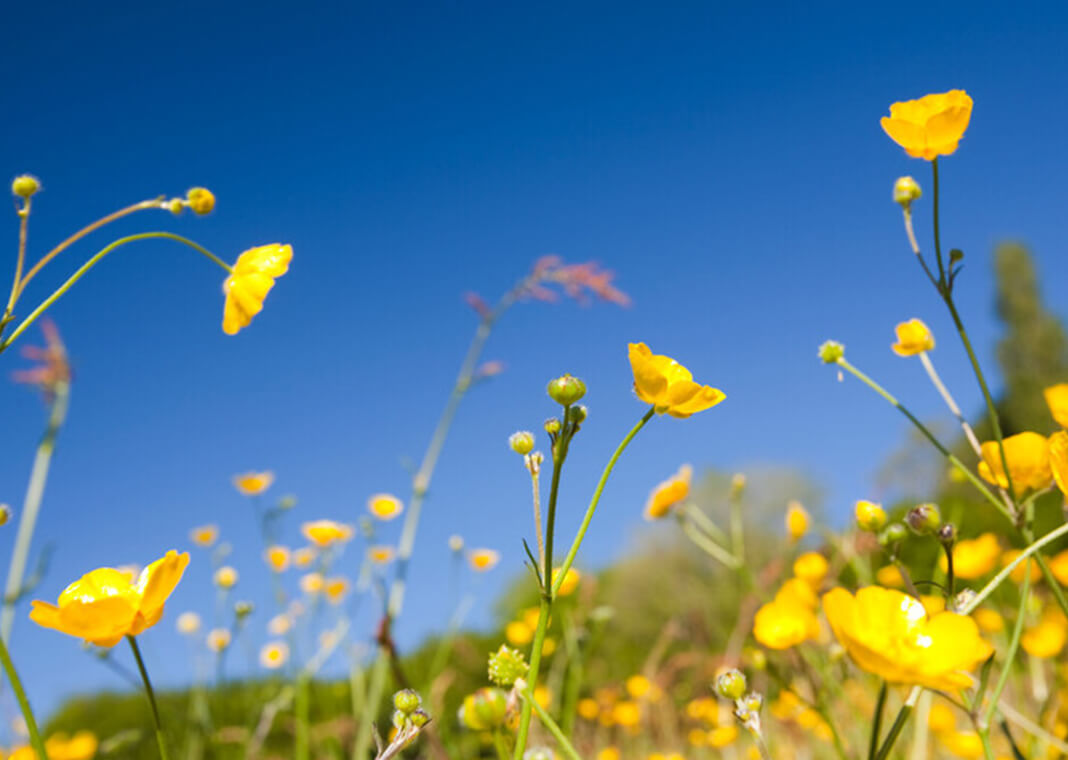
The other morning, my husband and I were walking at the park, taking in all the sights of plants and flowers and the sounds of birdsong. A large swath of yellow buttercups filled a nearby field. My husband reminisced about how, when he was a child, kids used to pick a buttercup, place it underneath the chin of a friend, and ask, “Do you like butter?” Lore said that a yellow reflection from the flower on the chin indicated the person did, indeed, like butter. Of course, the buttercup’s bright, sunny yellow was reflected on the chins of pretty much everyone. I remember playing that same childhood “game,” one that apparently dates back to at least the late 19th century. My husband noted that it is hardly even sensical; after all, who doesn’t like butter?
While I do not know the origin of the old activity, it did make me think about how much magical thinking fills our experiences of childhood! Children might play in the forest and imagine a world where fairies exist. Some make a fairy garden with acorns, twigs, leaves, and the like. My own children loved to collect leaves, pinecones, beach shells, and stones. Natural objects seem to possess a kind of sacredness and are full of possibility.
Though we can, of course, explain phenomena like yellow chins under buttercups scientifically, there is also a spiritual side to childhood that allows for imagination to imbue objects with meanings beyond their visible characteristics. Maybe a flower is just a flower, or maybe it has special powers to tell whether a friend likes butter and whether that friend is more like the yellow flower when her chin turns yellow. So my thinking went as a child, anyway.
When I go on my annual retreat each summer, I like to try to get back into a little bit of that childhood mindset. For me, that means being more sensory, on the one hand, and being more imaginative, on the other. Prayer might be reflecting with Scripture and delving more deeply into who Jesus is, but it can also involve lying on my back on a large seaside rock and watching the clouds shift shape, much like when I was a child. This, too, is prayer, since it’s a way to let myself unfold before God through creation. I shed some of the parts of my everyday self that can get in the way of a deep retreat. I shed the bag that hauls my books to work and the business jacket, but I also shed some psychological layers as well. When I am open to admiring the buttercups that line the path to the pond or let myself smell the scents of the beach roses, a space is created in me that is no longer filled with my “to do” list or worries. And then God has a little more room to enter in.
In recent years I have also tried to bring that openness into everyday life. Even when I do don my work clothes and find God in my vocation as a teacher, it is good to pause and to pay attention to the flowers, trees, and sky and to immerse myself just for a moment in the more childlike awareness of a Creator that is working through everything.

Always learn to be aware. Such beauty.
Being in nature calms me and gives joy.
Thankyou for the buttercup reflection.
We did it with a dandelion, and I like butter!
This the perfect meditation to read before my coming retreat on the 25th of this month.
a beutiful yet meaningful reflection. Thanks.
I love nature too. May we remember the command of our Lord Jesus asking us to be like children.
Wow! This is beautiful. I can not think of any other way to better practice mindfulness, living in the moment and realizing the beauty of God’s creation:)
Thanks Marina. Finding God in all things, in all places, and at all times is a massive grace.
May your day be filled with butter cups! Thank you for this.
Lorelei
Thank you for your reflection. When you retire your day can be all about letting God speak to you through nature, children and others if we allow it.
An appealing way to spend retirement!